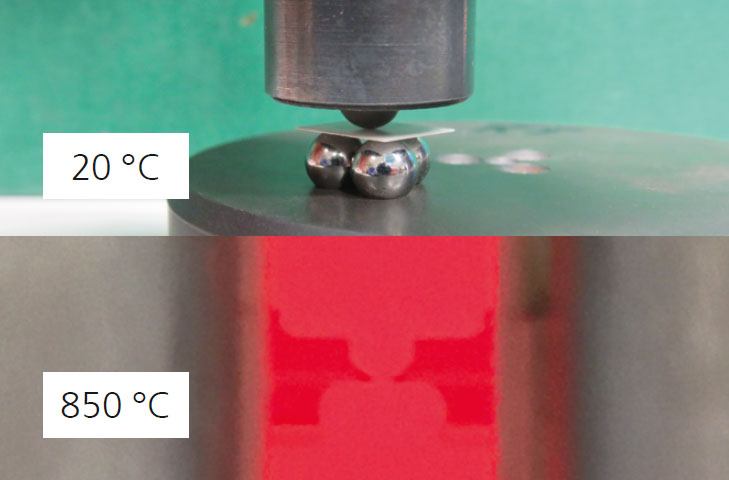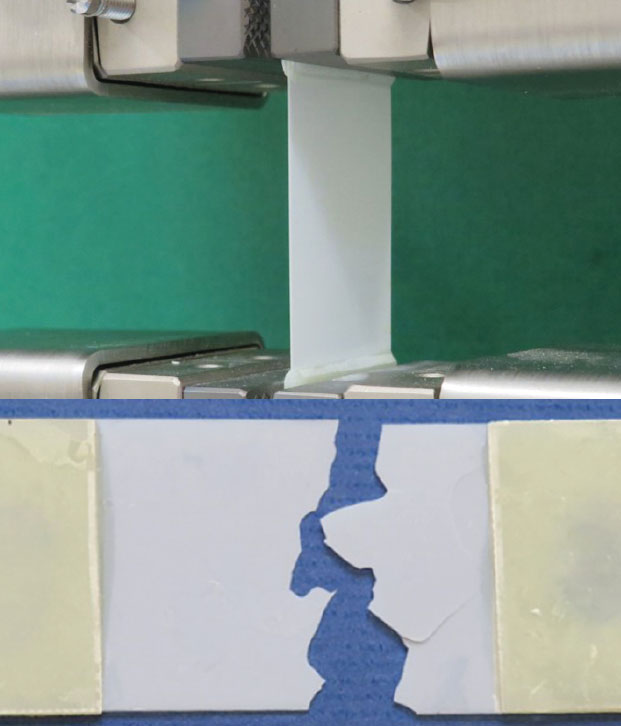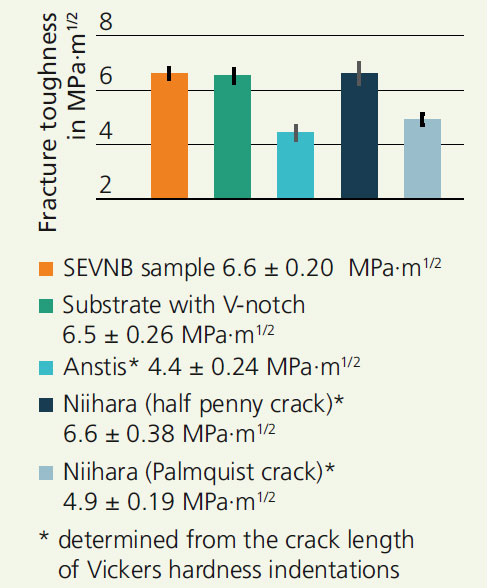
Determining the strength and fracture toughness of thin ceramic substrates
Current research




More and more power electronics components and SO(F)Cs rely on substrates made from Si3N4, AlN and ZrO2 materials. In addition to thermal conductivity, mechanical stability under thermal load cycles is an important prerequisite for the systems’ long service life and the miniaturization of circuits and assemblies. The assessment and quality assurance of these systems therefore focuses on characteristic values such as strength, fracture toughness and the scattering of these values. When it comes to thin substrates (d < 0.4 mm), any analysis of the results from the standardized 4-point bending test for strength assessment is only possible with extensive corrections due to strong deflection. Alternative methods, such as ring-on-ring or B3B strength testing, offer a lot of flexibility with regard to the sample size. Moreover, the results are not affected by the quality of the sample edge. The downside of these latter methods, however, is that the volume under load is low and represents merelya fraction of the sample, which tends to lead to exaggerated strength values. Calculating strength requires an FEM analysis to determine the stress distribution within the sample. Another way of determining the strength of substrates is a tensile test, which uses a greater sample volume (image 2). The quality of the values measured in such a test depends largely on how well the samples are prepared and mounted in the testing machine. A comparison of tensile testing with B3B testing yielded consistent results considering the volumes tested. This means that both methods are suitable for testing thin substrates. By integrating the B3B test setup into a universal testing machine with a furnace, it is even possible to test the strength of 3YSZ substrates at high operating temperatures of up to 1000 °C (image 1). The fracture toughness value describes how well the substrates can tolerate defects in the material. This value is determined using samples with a V-notch, representing a crack that is critical for the material. Fraunhofer IKTS has developed a method that allows producing notches in substrate samples as thin as 90 μm. After measuring the notch using stereomicroscopy, the thin samples underwent a bending test. Fracture toughness was determined based on the geometric data and the breaking force as detected in the test. A comparison of the fracture toughness of thermally conductive Si3N4 ceramics, performed by IKTS and measured on notched substrate samples (d = 250 μm, ISO 21113) and 3 x 4 x 45 mm notched bending bars (SEVNB in accordance with DIN EN ISO 23146) showed that the measured results were in high agreement. Determining fracture toughness via hardness indentations is possible only if the crack geometry and the applicable assessment formula are known (bottom figure). The comparisons performed point toward new options of determining mechanical characteristic values of substrates. With the testing methods developed at Fraunhofer IKTS and specially adapted for ceramic substrates, manufacturers and users are enabled to assess the quality of ceramic substrates by simple and effective means.
Services offered
- Development of new testing concepts, validation of test setups and load regimes through accompanying simulation
- Determination of the strength, fracture toughness and hardness of substrates
- Fractographic examination of defects leading to fracture
- Determination of thermophysical, electrical and dielectrical characteristic values